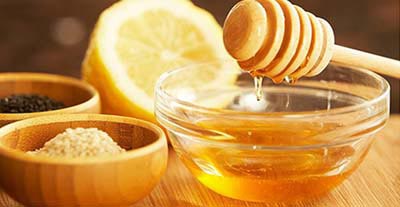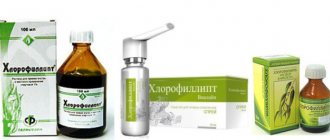Why should a child drink cow's milk?
Mother's milk supplies the baby with all the elements necessary for growth and development. Essentially, breast milk is food and drink at the same time. Since the baby drinks and eats breast milk, mothers feed him on demand. The natural product has a beneficial composition that changes as the child grows older, depending on the time of day and the well-being of the woman and baby. With a caloric content of 70 cal, it is saturated (per 100 g of product):
- fats (4.38 g);
- carbohydrates (6.90 g);
- protein (1 g);
- vitamins: A (60 mcg), beta-carotene (7 mcb), B1 (0.014 mg), B2 (0.037), B3 (0.178 mg), B5 (0.220 mg), B6 (0.010 mg), B9 (1.5 µg), B12 (0.05 µg), C (5 mg), E (0.08 mg), K (0.3 µg);
- calcium (30 mg);
- iron (0.03 mg);
- magnesium (3 mg);
- phosphorus (15 mg);
- potassium (51 mg);
- sodium (17 mg);
- zinc (0.17 mg)
It has been proven that the milk of a nursing woman contains more than 1000 components. Cow's milk contains 60 calories. Its composition is presented:
- fats (3.20 g);
- carbohydrates (5.1 g);
- proteins (3.3 g);
- vitamins: A (27 mcg), B1 (0.04 mg), B2 (0.17 mg), B12 (0.45 mcg), D (0.5 mcg);
- calcium (110 mg);
- magnesium (10 mg);
- potassium (143 mg);
- phosphorus (90 mg).
If we compare cow's and human milk, we can conclude that calves need strong bones, a healthy heart and blood vessels. Human breast milk is more aimed at the development of higher nervous activity.
Cow's milk contains more nutrients than a human baby needs, because a calf grows faster:
- Together with cow's milk, the baby's body receives 5 times more calcium than is required for normal development. In terms of phosphorus saturation, this figure exceeds 7 times. Excess calcium is eliminated from the body without problems, and getting rid of excess phosphorus is associated with the hard work of the kidneys, where calcium and vitamin D are also involved. A high concentration of phosphorus leads to an acute deficiency of these important components and threatens rickets.
- Proteins, minerals and other components that the child’s body does not need in large quantities are excreted through the kidneys. At the same time, an insufficiently developed urinary system experiences loads that are two to three times greater than the normal state.
The amount of iron that cow's milk contains is not enough for the body of newborns, which during feeding is expressed in a decrease in hemoglobin levels and causes iron deficiency anemia. Casein triggers the production of histamine, which threatens:
- intestinal bleeding, which even on a microscopic scale reduces hemoglobin levels;
- development of allergies.
Cow's milk is completely contraindicated for children under one year of age. However, from the age of three, the drink brings only benefits.
To find out whether children can have milk from a cow, you need to consult a pediatrician and a pediatric nutritionist. Milk formulas sold in stores that replace natural products have a number of advantages:
- They have a stable composition.
- Contains a full range of micro- and macroelements necessary for growth.
- Minimize allergic reactions.
The benefits of milk for a child
The beneficial properties of milk are due to its rich composition. The main advantages of milk include the presence of easily digestible calcium, which strengthens bones and teeth. A lack of microelement leads to a decrease in bone mass by 5–10%, the risk of fractures increases, and in older age pathologies of the musculoskeletal system are possible. B vitamins are necessary for a child to:
- maintaining the functioning of the nervous and cardiovascular systems;
- improving the functioning of the gastrointestinal tract;
- maintaining emotional health during stress, depression, and increased emotional stress;
- · normal cellular growth, muscle function;
- strengthening the immune system, increasing the body's resistance to disease.
Immunoglobulins, lactalbumin, glycopeptides and other ingredients increase the body's protective functions. For the normal development of a growing child, protein is the main building material of cells and tissues. It is also invaluable in developing healthy digestive and immune systems.
Cow's milk is the only product that has no analogues that accelerates the development of intelligence. This is facilitated by tryptophan, an essential acid, which, by transforming into nicotinic acid, improves cerebral circulation and has a positive effect on the central nervous system.
It was experimentally found that regular consumption of warm milk by schoolchildren and students improves brain function five times and increases alertness.
At what age can a child be given cow's milk?
Young parents often ask the question: at what age does cow’s milk become safe for babies? Most experts believe that the product is completely contraindicated for children under one year of age.
From what months should you introduce complementary foods?
Before introducing whole milk into your baby's complementary feeding, it is necessary to study the features and frequency of its supply. High-quality dairy products and dosage agreed with the doctor eliminate negative consequences and side effects.
A good example of replacing breast milk is infant formula, which contains minimal amounts of phosphorus, but is oversaturated with calcium and vitamin D. A specific dairy product corresponds to each age.
Cow's milk is contraindicated for children under three years of age if its consumption causes allergies and disrupts the functioning of the digestive system (constipation or diarrhea). It is excluded from the children's menu in case of renal pathologies and metabolic disorders. Fermented milk products are introduced into the child’s diet earlier:
- cottage cheese – from 6–7 months;
- kefir, fermented baked milk, natural yoghurts - from 8–9 months.
It is advisable to purchase them at a special dairy kitchen or prepare them yourself from regular store-bought pasteurized milk, the fat content of which does not exceed 1.5%.
Rules for introducing into children's diet
Complementary feeding with cow's milk begins with a minimum amount of 0.5 tsp. for 1 tsp. breast milk. After the first use, observe the reaction of the child’s body. At the slightest deviation, the drink is excluded from the diet.
If there are no negative manifestations, the dosage is adjusted to correspond to the age category by a gradual increase.
In case of acute and chronic diseases, as well as after preventive vaccinations, innovations in the baby’s menu are undesirable. Before introducing cow's milk into your child's diet, you should consult your pediatrician.
Giving honey to children up to one year old or after: how to do it right?
Modern medical experts categorically do not recommend giving this product to very small children in order to avoid unnecessary health risks. If you include honey in the diet of children, then only after they reach one and a half years of age. Ideally, at least three. At the same time, it is important not to forget about clear rules for introducing a new product into the diet.

Can you resist this honey?
You should only buy honey from reliable sellers. For example, if you are absolutely sure that a person has been keeping a personal apiary for many years and does not treat his bees with harmful substances in order to avoid their diseases. Moreover, the result of labor half and half with sugar does not interfere.
Natural honey is best consumed diluted, and not as an “independent dish”. The optimal tandem is warm drinks, such as milk or cereal.
It is imperative to carefully monitor the baby’s reaction. Is it possible to use honey if a child suddenly has a rash, complains of digestive upset and simply does not want to eat natural “candy”? It’s definitely not possible, and the point here is not that you were unlucky and purchased a low-quality product. Truly natural honey contains so many beneficial substances that a child’s body may simply not be able to cope with them.
If you don’t want to risk your child’s health and decide to wait until they are 6 years old, then you can start with three tablespoons a day, naturally, divided into separate doses.
Despite the categorical answer whether a one-year-old child can have honey, many parents prefer to take a risk. There are times when this does not affect the well-being of their child. But still remember that a small organism is unpredictable and individual. And what suits one may have contraindications for another.
In what form should cow's milk be given?
You can give your baby cow's milk if it is purchased from a store specially designed for this purpose. It:
- guarantees high quality (raw materials are taken from healthy animals living in areas with good ecology);
- produced in strict compliance with sanitary standards;
- is subject to serious microbiological control;
- corresponds to the fat content optimal for children under 3 years of age (2.5–3.5%);
- It is distinguished by acidity, which complies with baby food standards (no more than 100 Turner degrees).
- undergoes ultra-pasteurization, which cleans the product from pathogenic microorganisms.
- stored in aseptic packaging.
How to give honey?
There are no special rules regarding the use of a natural product. If the child is still too small, you can let him lick a spoon or dilute the sweetness in a bottle with milk. If he is already eating solid food, make him some nice toast or offer to dip pieces of fruit in bee nectar.
Pediatricians recommend diluting honey with water for children. It is believed that this is how the product is absorbed best. An alternative to water can be milk or tea - but not too hot, since the beneficial properties of bee nectar are destroyed at temperatures above +40 degrees.
The natural product is also successfully used externally. If children have a runny nose, honey in their nose will replace pharmaceutical medications. Just dilute it with water in equal proportions and instill 2 drops every 3-4 hours.
Honey, lemon, garlic: recipes, proportions
If you have a severe cough, you can rub your child with honey. For greater effect, it is recommended to slightly warm up the sweetness, then apply gauze to the treatment area and wrap the child tightly in a blanket. In this case, the bee product acts like mustard plaster.
Articles on the topic:
Cottage cheese with honey: a healthy delicious recipe
Walnuts with honey: getting healthier with taste
How to teach a child to drink milk
The baby may not like cow's milk the first time, since the taste of the new product differs from the usual breast milk or formula. If a child refuses milk, coercive measures are excluded. We need to try other methods:
- Reduce the number of breastfeedings.
- Mix cow's milk with breast milk or formula, gradually increasing the amount of the former.
- Offer milk in an unusual cup and bottle.
- Heat the drink to bring the taste of cow's milk closer to breast milk.
If unsuccessful, milk can be replaced with other products containing similar beneficial substances.
Honey for children: benefit or harm

“Keep in mind: if your baby’s throat is red, honey is the best remedy,” another grandmother echoes. But mom has doubts, remembering that she heard somewhere about an allergy to honey. Let's try to figure out in which cases honey is a truly effective and justified measure, and when it is better to give preference to medications. Read also
Scenario for the birthday of a 6-year-old girl or boy: ideas for choosing a theme and location for the celebration
Harm of cow's milk for a child
There are two main reasons why a child should not drink cow's milk.
Allergic reaction
Allergy to the protein component of cow's milk manifests itself in:
- Gastrointestinal diseases - diarrhea, vomiting, constipation, reflux;
- skin problems - hives, eczema, etc.;
- respiratory symptoms – persistent cough, wheezing;
- nervous disorders - lethargy, irritability, insomnia.
Clinical manifestations do not always develop immediately after feeding; sometimes an allergic reaction is observed several days after consuming the drink.









